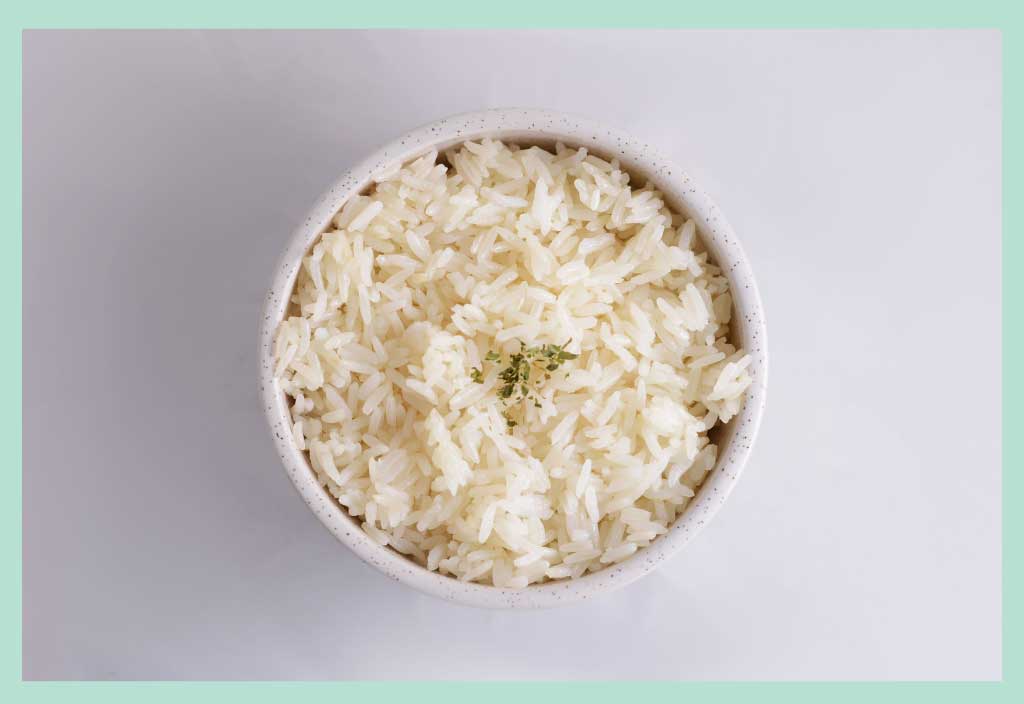Discover why rice can wreak havoc on your garbage disposal and the potential issues you may encounter.
Want to learn more about the detrimental effects of rice on your garbage disposal and explore alternative disposal methods?
Suppose you’ve ever wondered whether putting rice in the garbage disposal is safe. In that case, the answer is a resounding no because it is a prime candidate for causing clogs and impairing the functionality of your garbage disposal.
Keep reading as we dive deeper into the topic, providing valuable insights to help you maintain a smooth-running kitchen disposal system.
Can You Put Rice Down the Garbage Disposal?

As long as you are throwing one to a few rice grains into the garbage disposal, it is absolutely alright. But if you throw away a good amount of rice in the garbage disposal, you will regret it later.
Rice can cause a clog inside the garbage disposal if thrown away in a bunch at a time.
After the rice is thrown in the garbage disposal, it grinds up, forming a thick paste that cannot easily be removed with water. It blocks the movement of water.
If you throw a few rice grains inside the garbage disposal, they might go through the gaps of the impeller of the garbage disposal.
But it is better not to, as it might also stick to the edges of the impellers or blades of the garbage disposal, making it blunt.
What Are the Reasons You Should Not Put Rice Down the Garbage Disposal?
One of the most significant issues with rice that makes it an enemy of garbage disposal is that it is a very water-absorbent and starchy food item which makes it sticky.
Maybe you know that boiled rice is used as a substitute for glue in many places. So, can you imagine how much gluey rice is?
It sticks stubbornly on the impellers of the garbage disposal, creating a firm blockage.
As a result, no food or water can drain away due to the clog produced by rice inside the garbage disposal.
And when it gets awful, the drained-away water and debris return to the sink, creating a very nasty situation.
To avoid such nightmares, you must avoid putting rice or foods prepared with rice inside the garbage disposal, or else you will have to pay for it.
Best Way to Dispose of Rice from the Kitchen
The best option for disposing of a good amount of rice from the kitchen after a meal is throwing them in the trash can or kitchen bin that is adequately wrapped with the garbage carrying a plastic bag.
Usually, in the case of rice, you do not have to worry about lousy odour formation after tossing it in the trash can, generally which you have for other kinds of foods.
Luckily, rice does not form a foul smell, even if they rot. Hence, if you do not put rice inside the trash can due to the fear of a bad smell, shred it out of your mind.
Once you keep the rice in the trash, you no longer have to think about it causing trouble.
It will end up in the waste disposal van, where all other waste and garbage from the trash ultimately go.
How to Dissolve Rice in the Garbage Disposal? (To Unclog)
If you have already put rice in the garbage disposal recently and are here to find out whether it is the reason behind the clog in your garbage disposal, you should know there is a good chance that this is the culprit.
But there is good news for you: unclogging the garbage disposal blocked by rice and dissolving the rice is not very tough.
Because rice grains get softer and eventually break down when it comes in contact to warm or boiling water and acid.
Just follow these ten steps below to dissolve this issue away from the garbage disposal.
Step 1: Put 2 cups of water in a pot, place it on the stove, and let it boil.
Step 2: Once the water is boiled, pour it gently and carefully through the sinkhole down to the garbage disposal so that it can wash away or at least start dissolving all the clumps of rice, causing the clog to occur.
Make sure you do not spill the water on yourself. We do not want any accidents here.
Step 3: Then wait for about 10 minutes. Let the boiling water do the job.
Step 4: Turn on the water tap that runs lukewarm water. Make sure you turn it on with a reasonable force so that the water reaches the garbage disposal fully and washes away all the broken-down and dissolved rice residues.
Step 5: It is time to check whether your garbage disposal has finally been unclogged.
Turn off the water tap and then turn the cold water tap on and keep it running to observe whether the water is flowing backwards. The cold water helps to remove clots in the garbage disposal.
Step 6: Your mission is accomplished if the water does not return and gets drained away smoothly. You have successfully unclogged your garbage disposal from the clumped and sticky rice.
But if your garbage disposal has not properly unclogged yet and the water does not drain away as smoothly as before the clog, try repeating the above steps.
If, even after trying twice, it does not unclog, then do the following steps.
Step 7: Measure the ½ or 1 cup of baking soda and put it into the garbage disposal. After that, take white vinegar of the exact measurement and pour it inside the garbage disposal.
Any kitchen vinegar or baking soda would work. It does not have to be of any specific type or brand.
Step 8: Cover the sinkhole using the plug and leave it for 20 to 40 minutes.
Step 9: Now turn on the lukewarm water tap with good force for the last time (hopefully).
And let it run for some time and check whether the water is returning. Hopefully, the water would not return this time.
Step 10: However, if the water still flows back and the clog has not dissolved, the problem may not be rice.
Because if it was, then the rice should have dissolved by now. In this case, contacting a plumber is a better option.
Common Foods to Avoid Putting in Garbage Disposal
While garbage disposals can handle many food scraps, I have mentioned several common foods you should avoid putting in them here.
These include hard or fibrous foods like bones, fruit seeds, corn husks, onions, eggshells, and some vegetables. These items can damage the blades and motor of the disposal, causing it to malfunction.
You should also avoid putting oils, fats, and grease down the garbage disposal, as they can solidify and clog the drain pipes. Coffee Grounds also do the same thing inside the drain.
Additionally, starchy foods like rice, pasta, bread, and potato peels should not be put in the garbage disposal, as they can form a paste that can clog the drain.
Garbage disposal is only for the use of food waste. So you should never put Non-Food Materials in the garbage disposal.
Final Words
I hope I was able to solve your problem caused by throwing rice inside the garbage disposal. If you have not faced it yet and are here to check if it would be a good idea, now you know the answer.
For those who already did it once, don’t repeat this significant mistake in the future. And those who did not throw rice in the garbage disposal before, you better not throw it in the future too.

James is an organic fertilizer professional who owns a successful organic fertilizer company in new jersey. He is an expert in waste management in both houses and community cases. In his free time, he loves to write about his experiences in the field.


3 thoughts on “Rice in Garbage Disposal (Don’t Put In! Here Is Why)”
Comments are closed.